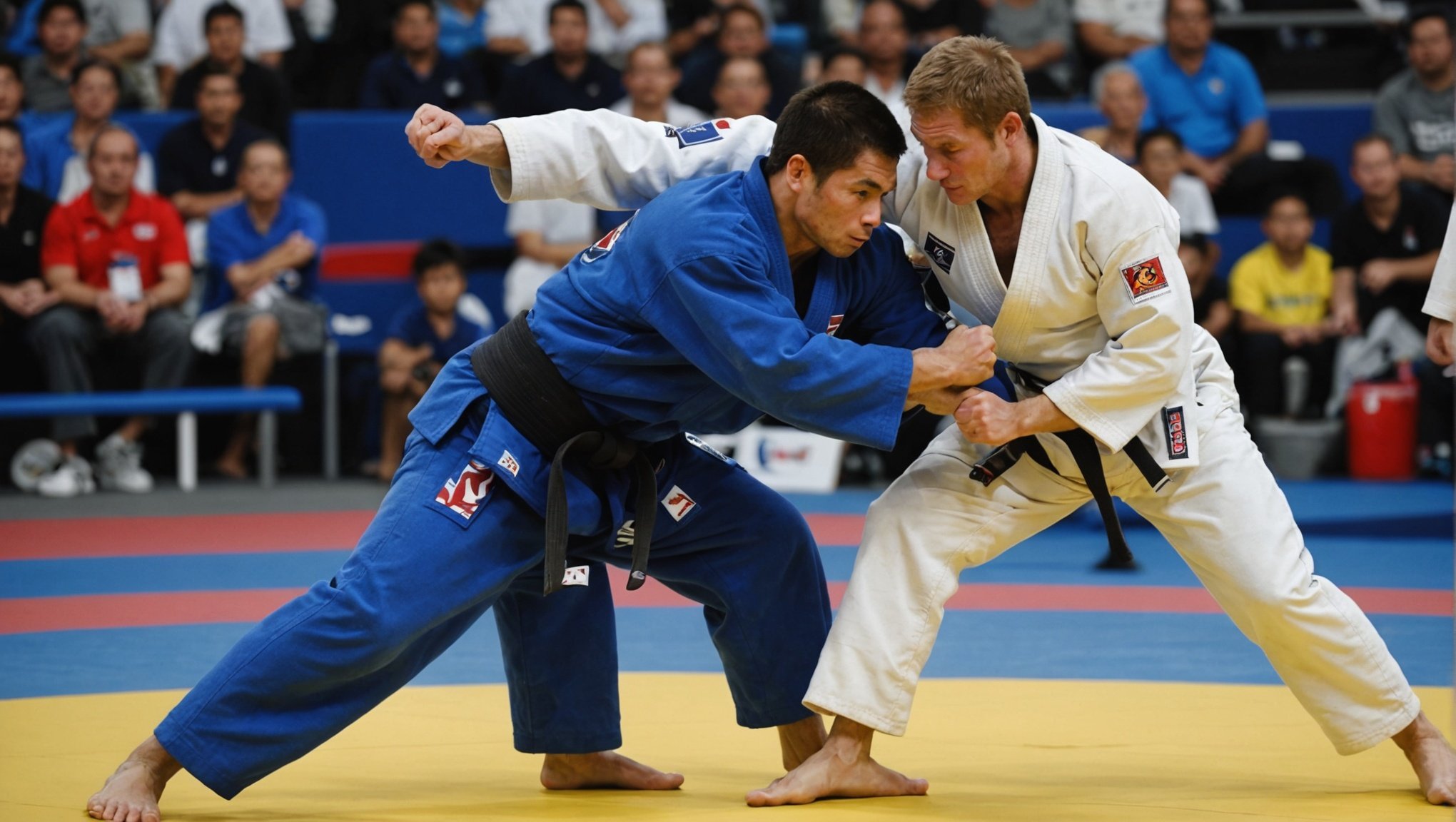Unlocking Power: Essential Grip Strength Techniques for Judo Athletes to Enhance Performance
The Importance of Grip Strength in Judo
Grip strength is a crucial component of a judoka’s arsenal, playing a pivotal role in determining their overall performance on the mat. In judo, the ability to maintain a strong and enduring grip can be the difference between executing a flawless throw and losing control of the opponent. Here’s why grip strength is so vital:
- Control and Dominance: A strong grip allows judokas to control their opponents more effectively, setting up for throws, takedowns, and submissions. It is essential for maintaining the judogi grip, which is fundamental in judo techniques.
- Endurance: Judo matches can be highly intense and prolonged, requiring athletes to sustain their grip over extended periods. Elite judokas have been shown to have superior grip endurance compared to non-elite players, highlighting its importance in competitive judo.
- Injury Prevention: A robust grip can also help in distributing the force of throws and takedowns more evenly, reducing the risk of injuries to the hands, wrists, and arms.
Training Methods for Improving Grip Strength
Improving grip strength is not just about doing a few hand exercises; it involves a comprehensive approach that targets various aspects of hand and forearm muscles. Here are some effective training methods:
Also to read : Essential Strategies for Athletes to Reduce Concussion Risks in American Football
Exercises with Dumbbells and Kettlebells
Exercises using dumbbells and kettlebells are highly effective for handgrip development. Here are a few key exercises:
- Farmer’s Walks: This exercise involves walking with heavy dumbbells or kettlebells in each hand, which strengthens the grip, forearms, and overall upper body.
- Wrist Curls: Using dumbbells, perform wrist curls to target the flexor muscles of the forearm.
- Reverse Wrist Curls: This exercise targets the extensor muscles of the forearm, providing a balanced development of grip strength.
Specific Grip Training
In addition to general strength training, specific grip training is essential. Here are some tips:
In parallel : Maximizing Tactical Communication: Key Strategies for Team Handball Athletes
- Plate Pinches: Hold weightlifting plates between your fingers and thumb for as long as possible. This exercise targets the fingers and thumb.
- Grip Strengtheners: Use grip strengtheners or grip trainers to perform squeezes and releases. These devices are designed to target the muscles responsible for grip strength.
- Towel Pull-Ups: Wrap a towel around a pull-up bar and perform pull-ups using the towel. This exercise simulates the grip required in judo and other combat sports.
The Role of Upper Body Strength in Grip Performance
Upper body strength, particularly in the shoulders, back, and arms, is closely linked to grip performance. Here’s how upper body strength impacts grip:
Barbell Exercises
Top judokas often incorporate barbell exercises into their strength and conditioning programs. These exercises include:
- Bench Press: Strengthens the chest, shoulders, and triceps, all of which contribute to overall upper body stability and grip.
- Overhead Press: Targets the shoulders and triceps, enhancing the ability to maintain a strong grip during throws and takedowns.
- Deadlifts: Works multiple muscle groups, including the back, shoulders, and arms, which are crucial for maintaining a robust grip.
Pull-Ups and Rows
Pull-ups and rows are essential for building the back and arm muscles that support grip strength.
- Pull-Ups: This exercise targets the latissimus dorsi, biceps, and other muscles in the back and arms.
- Rows: Whether using a barbell, dumbbells, or a rowing machine, rows help build the muscles in the back and arms that are vital for a strong grip.
Advanced Gripping Techniques
Beyond basic grip strength, judokas can benefit from advanced gripping techniques that enhance their performance on the mat.
The Georgian Grip
The Georgian Grip is a unique and powerful gripping technique often seen in judo and wrestling. Here’s how it works:
- Control and Off-Balancing: This grip allows judokas to control and off-balance their opponents effectively, setting up for massive throws and takedowns. It involves gripping the judogi in a way that maximizes leverage and control.
Practical Tips for Improving Grip Strength
Here are some practical tips and fitness tips that judo athletes can incorporate into their training:
Consistency and Variety
- Consistent Training: Regular grip training is essential. Aim to include grip exercises in your routine at least 2-3 times a week.
- Variety of Exercises: Mix up your grip training with different exercises to avoid plateaus and ensure balanced development.
Home Gym Setup
- Grip Strengtheners: Invest in grip strengtheners or grip trainers that can be used at home.
- Dumbbells and Kettlebells: Having dumbbells and kettlebells at home allows for convenient grip training sessions.
High Intensity Training
- High Intensity Interval Training (HIIT): Incorporate HIIT into your grip training to simulate the high-intensity nature of judo matches.
- Plyometric Grip Exercises: Use plyometric exercises like explosive grip squeezes to improve power and endurance.
Table: Comparative Analysis of Grip Strength Training Methods
| Training Method | Targeted Muscles | Benefits | Examples |
|---|---|---|---|
| Farmer’s Walks | Forearms, Hands | Improves grip endurance and overall upper body strength | Walking with heavy dumbbells or kettlebells |
| Wrist Curls | Flexor Muscles | Strengthens the flexor muscles of the forearm | Using dumbbells to curl the wrists |
| Reverse Wrist Curls | Extensor Muscles | Strengthens the extensor muscles of the forearm | Using dumbbells to curl the wrists in reverse |
| Plate Pinches | Fingers and Thumb | Targets the fingers and thumb for improved grip | Holding weightlifting plates between fingers and thumb |
| Towel Pull-Ups | Back, Arms | Simulates the grip required in judo and other combat sports | Pull-ups using a towel wrapped around a bar |
| Barbell Exercises | Upper Body | Enhances overall upper body strength supporting grip | Bench Press, Overhead Press, Deadlifts |
| Pull-Ups and Rows | Back, Arms | Builds the back and arm muscles supporting grip | Pull-ups and rows using various equipment |
Quotes from Experts and Athletes
- “Grip strength is not just about the hands; it’s about the entire upper body. When you have strong shoulders, back, and arms, your grip becomes almost unbreakable.” – Coach Crosby, Judo 101.
- “The Georgian Grip is a game-changer. It allows you to control your opponent in a way that traditional grips can’t. It’s all about leverage and timing.” – Judoka, International Judo Federation.
Injury Prevention and Health Considerations
While training for grip strength, it’s crucial to consider injury prevention and overall health.
Warm-Up and Cool-Down
- Proper Warm-Up: Always warm up before starting any grip training session. This includes light cardio and dynamic stretching.
- Cool-Down: After training, cool down with static stretches to prevent muscle soreness and injury.
Balanced Training
- Balanced Muscle Development: Ensure that your training program is balanced, targeting both the flexor and extensor muscles of the forearm.
- Avoid Overtraining: Avoid overtraining, as this can lead to injuries such as tendonitis or muscle strains.
Grip strength is a cornerstone of judo performance, and its development requires a multifaceted approach. By incorporating a variety of exercises, advanced gripping techniques, and maintaining a balanced training regimen, judo athletes can significantly enhance their athletic performance. Here are some final tips:
- Consistency is Key: Regular grip training is essential for continuous improvement.
- Seek Professional Guidance: Consult with coaches or trainers to tailor your training program to your specific needs.
- Combine with Upper Body Strength Training: Ensure that your grip training is complemented by upper body strength exercises to maximize effectiveness.
By following these guidelines and tips, judo athletes can unlock the full potential of their grip strength, leading to improved performance, better health, and a competitive edge in the world of combat sports.






